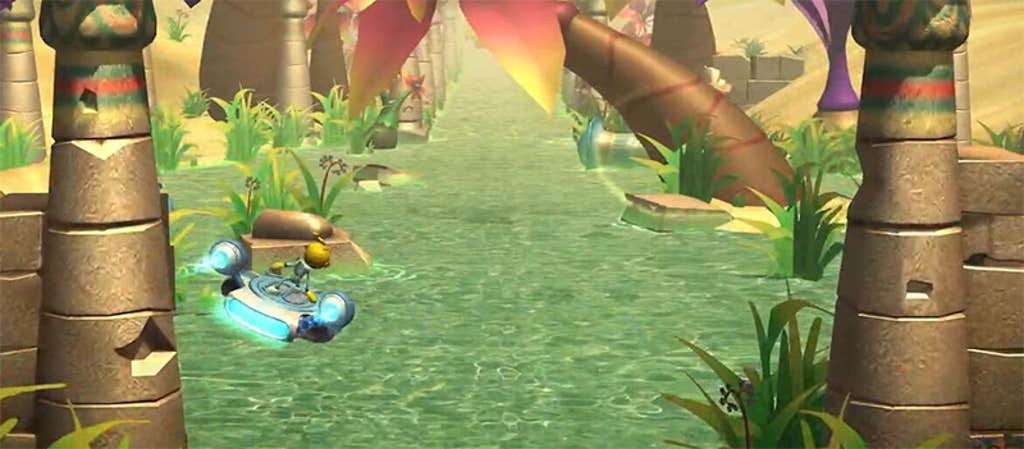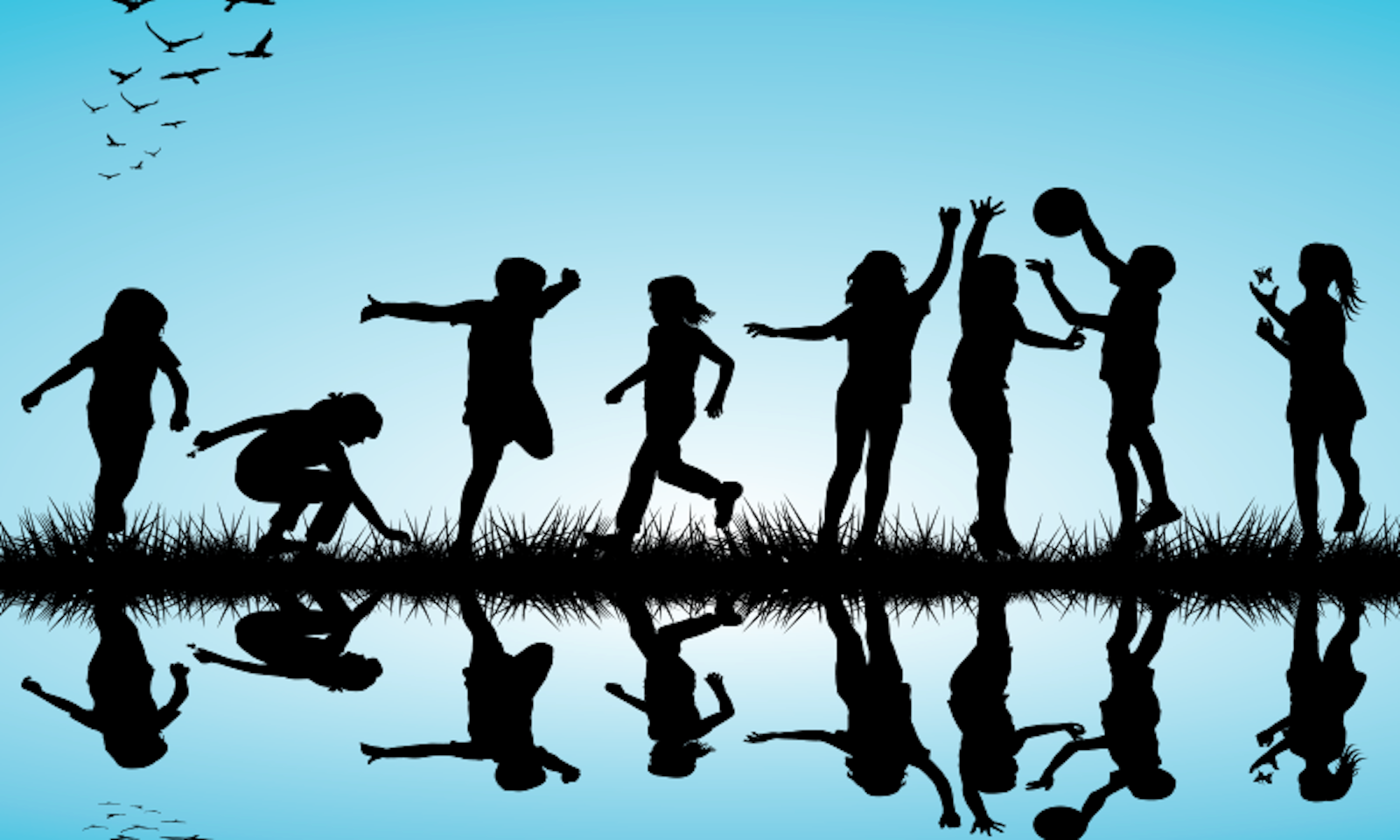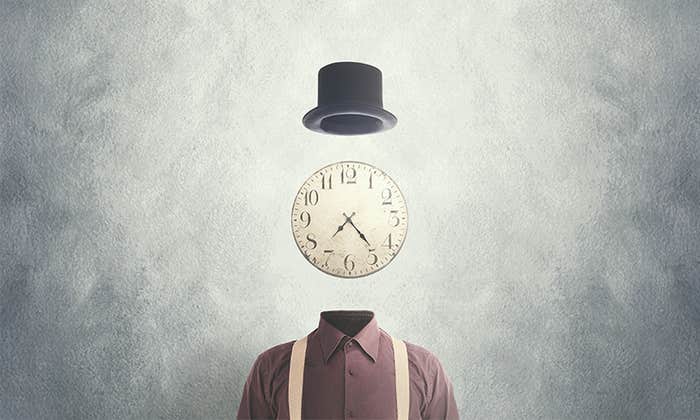David Zhang of Guangzhou University recently led a group high into the Tibetan Tableau of Southwestern China, an area known as “the roof of the world” for its elevation 4,000 meters above sea level. There, they found a piece of limestone that had fossilized a playful composition of hand and foot impressions. The pattern was “deliberate” and “creative,” according to a paper that Zhang and fellow researchers published in the journal Science Bulletin in 2021, and the piece “highlights the central role” that artistic exploration and play has held for our species. Uranium series dating determined that this artwork could be 226,000 years old. With our hands and our feet as our first artistic tools, we’ve been leaving behind our imaginative impressions since Earth’s last ice age.
Play is a key component of the arts and aesthetics in myriad ways. Art and play are like two sides of the same coin, with play being a part of artistic expression, imagination, creativity, and curiosity. Though it often gets buried in adulthood, the urge to play exists in all of us. It has been a major part of how we’ve evolved as a species. As Plato famously said, “You can discover more about a person in an hour of play than in a year of conversation.”
Kids today will have jobs and careers that are nothing like anything their parents and elders recognize.
Roberta Michnick Golinkoff, a professor of education at the University of Delaware, and Kathy Hirsh-Pasek, a professor in the Department of Psychology at Temple University and a senior fellow at the Brookings Institution in D.C., have identified play as a key ingredient for learning. The title of their 2003 book pretty well sums up their philosophy and their years of research around play and learning. It’s titled: Einstein Never Used Flashcards: How Children Really Learn and Why They Need to Play More and Memorize Less.
“If you’re not having a good time, you’re really not learning,” Roberta told us. “And there are so many ways in which we can infuse play into classrooms and informal learning environments.” This is supported in the research on the neuroscience of play and learning. Play, the research notes, is universal to our species, and when humans play it positively influences both their cognitive development and their emotional well-being.
There are, Roberta and Kathy point out, two major kinds of play, free play and guided play. Free play is under a child’s control and not designed to satisfy any external goal. Kids excel at this. Think about playing dress-up or make-believe. Play with an adult who has a learning goal is guided play. When it’s done well, it supports the learning of new skills.
Roberta and Kathy use the example of bowling. In most alleys, you can ask for bumpers to be raised so that the ball never rolls into the gutter. When a person is first learning to bowl, the bumpers help to make the skill more fun if they get to discover the joy of knocking a few pins down. “With guided play, we set up the environment for kids so that they can learn different things,” Roberta explains.
When children have an opportunity to learn in a playful way where they have some agency, where they’re active, where they get to be involved and collaborate, it leads to the gold standard of learning: transfer. “You can take something you learned in one context and apply it to another, and when you can create environments in which these things are exemplified, that’s when you get real learning,” Roberta says.
One teacher they mentioned set up a center with all kinds of writing implements and paper. “Now, this was kindergarten before kids really knew how to write,” Roberta says. “But what did it do? It spurred writing during their free time. They would come up and ask the teacher: ‘How do I write this letter? How do I write my name?’ ”
Kathy and Roberta’s latest book, the bestseller Becoming Brilliant, offers an honest assessment of where we are: Kids today will have jobs and careers that are nothing like anything their parents and elders recognize. They need to be able to adapt to rapidly changing realities. They need to be able to entertain different ideas and approach them without consequence.

And yet with all the changes under way, we’re still pretending that content in education is king, but it is not the only thing that is important. Really what kids need to learn, they told us, are the “6 C’s”: collaboration, communication, content, critical thinking, creative innovation, and confidence. Play and the arts, based on their research, build the 6 C’s. An initiative that the two of them are involved in, one that Susan also helped to build, is called Playful Learning Landscapes Action Network.
By 2050, nearly three-quarters of the world will live in urban settings, and this network is designing play into that eventual reality. The landscapes incorporate evidence-based designs that use the arts, and games, to transform everyday public places—bus stops, libraries, parks—into hubs of playful learning. In one game called “jumping feet” a series of stones with drawings of either one or two feet are placed at strategic distances, with signs that encourage kids to jump in specific patterns. It’s a twist on hopscotch that uses cognitive-science methods proven to improve attention and memory.
Studies of pilot programs in the cities of Chicago, Philadelphia, and Santa Ana have found that these playful environments encourage children to talk about numbers, letters, colors, and spatial relations with their caregivers, and they can increase children’s understanding of mathematical concepts, including fractions and decimals, among other skills. They also create intergenerational and peer-to-peer learning where the world becomes a playful studio. Once you open up to the idea of playful landscapes being everywhere and anywhere, suddenly your surroundings become a world of possibility.
To learn anything at all, one of the most important cognitive states has to be present from the very beginning: attention.
Attention directs our consciousness to focus on some things and not others, and it is a fluid state that moves through varying degrees. “Attention is your ability to selectively focus and sustain focus,” Adam Gazzaley explained to us one afternoon. Adam is a neuroscientist and professor of neurology, physiology, and psychiatry at the University of California, San Francisco, and the founder and executive director of Neuroscape, and he’s been studying the brain’s capacity for attention for decades. “Your ability to move your attention flexibly, which is called switching, is quite limited,” he said.
Sustained attention is a challenge for all of us. Adam, along with psychologist Larry D. Rosen, disabused us of the myth that humans can, in fact, multitask. In their 2017 book The Distracted Mind, they explain that the human brain isn’t actually capable of doing multiple things at once. The human brain never multitasks, Adam said. Our brain is actually toggling quickly between tasks.
For many, the ability to maintain levels of attention is a challenge. It’s estimated that as many as 366 million adults around the globe live with attention deficit hyperactivity disorder (ADHD). Six million children have been diagnosed with ADHD in the United States as of 2016. ADHD can make it difficult to sit still, focus, and stay quiet. Because ADHD affects divided attention, or what has previously been described as multitasking, it can inhibit organization. This often means that the experience of a traditional classroom setting is horrible. Young people with ADHD are often labeled as having behavior problems and being classroom disruptors. These labels are misplaced and can forever damage a child’s belief in their own intelligence and abilities. There is the roller-coaster ride that can come from trying different medications, not to mention the staggering cost of these pharmaceuticals, which can run in the hundreds of dollars per month.
Adam has a solution for ADHD: immersive video games.
That’s right. The great scourge of parents everywhere in the “drop that controller and pick up your homework” debate can be an excellent form of learning when designed with neuroarts in mind. To boost a child’s attention, it may help to let them play Adam’s video game, NeuroRacer, for 30 minutes a day.
Adam has studied how neural networks in the brain underlie our ability to pay attention, or our failure to. He started researching what happens in the brains of those with ADHD in order to translate brain science into devices and processes that help at the neuronal level.
Adam’s group was able to prove the sustained benefits to neural mechanisms after playing this video game.
Our capacity to pay attention is crucial for everything we do in life. “When attention is degraded or it doesn’t develop well or it’s simply fragmented by too much switching in life, everything is impacted,” he says. “How you interact with your family, how you go to sleep at night, how you perform your schoolwork and your homework or your other work.”
Adam wondered how he might harness the brain’s plasticity to lead to improved attention. The best way to stimulate plasticity, he knew, was through immersive experiences. But he needed to figure out how to create experiences that selectively targeted neural networks in such a way that they created improved attention span. Learning is, by its very nature, a moving target. When our brain shifts to create new neural circuits, it’s not the same as when we started, so Adam puzzled over how you create a process that adapts with the brain’s plasticity.
That’s when he took a page from engineering and looked into the closed-loop system. The example he used with us is that of a clothes dryer. “A closed-loop dryer would be one that, instead of just setting a time and then going back and checking if your clothes are dry, as our dryer works, which is very inefficient, the dryer has sensors that detects the moisture in your clothes and basically turns off when your clothes are dry,” he explained.
“So, a closed-loop system has sensors to take in input about what they want to change, and then has a processor that makes a decision based on that data,” he said. “So, what I wanted to create was a tool where your environment, the stimuli, the challenges, the rewards are all updating in real time based on your brain.”
Video-game design and augmented reality are dynamic aesthetic enhancers. The artistic components that create a successful game—an immersive world, strong art and graphic design, vibrant colors, sounds, music, storytelling, and characters—are what make gameplay so compelling. And there is also the emotional attachment to the narrative and your role in the story.
Adam set about designing an aesthetically rich video game that would support and build the brain’s capacity to pay attention. He partnered with talented video-game developers in order to create something that worked with an attention-deficit brain. “I took the art and aesthetics of the game quite seriously,” he said. It took a year, and in 2013, he released NeuroRacer.
His immersive game challenged the neural networks that are fundamental to cognitive control and attention abilities: interference resolution, distraction resistance, task-switching. By playing, the hope was that the game could reshape those circuits. And these benefits would transfer by lasting beyond the game and be carried over into the rest of your life. “If a kid gets better at a test in school but is not actually able to perform that work in the real world, you’d sort of consider that a failure of the education system, right? Because the goal is not just to get better at your test and not to get a great SAT, but to actually be smarter and savvier and wiser,” Adam says.
As a player in Adam’s game, you’re in an environment where you have a series of goals and they’re challenging you in an adaptive way. “One task is navigating through this 3-D world,” Adam describes, “where you have to go over these icebergs and waterfalls. Then at the same time, you also have to respond to targets and ignore distractions. This is like cognitive control through the roof. You have two tasks that are both equally important to you that are occurring simultaneously in the presence of distractions.” The game starts easy and gets harder as your attention capacity improves.
Adam and his team found that improvement in attention for players did extend outside of the game, and their research made the cover of the scientific journal Nature. Adam’s group was able to prove the sustained benefits to neural mechanisms after playing this video game.
Next, Adam started a company called Akili that took the game to the next level by infusing it with more sophisticated levels of art, music, story, and reward cycles for the players. That version of the game went through multiple clinical trials, including a Phase 3 placebo-controlled trial in children with ADHD. For the trial, a kid played for 30 minutes a day, five days a week, for one month and that was considered, to put it in pharmaceutical terms, “a dose.”
In 2020, the game, now called EndeavorRx, was approved by the FDA as a Class 2 medical device to treat children with ADHD. “This is the first non-drug treatment for ADHD and the first digital treatment for children in any category, so it was really pretty exciting when it happened,” Adam says. His video game is now being prescribed by doctors. What’s extraordinary about Adam’s work is his capacity to understand how learning differences—like attention deficits—actually work in the brain, and how arts-infused experiences can address them. ![]()
Susan Magsamen is the founder and director of the International Arts + Mind Lab, Center for Applied Neuroaesthetics at Johns Hopkins University School of Medicine, where she is a faculty member. She is also the co-director of the NeuroArts Blueprint. Susan works with both the public and private sectors using arts and culture evidence-based approaches in areas including health, child development, education, workforce innovation, rehabilitation, and social equity.
Ivy Ross is the vice president of design for hardware product area at Google, where she leads a team that has won over 225 design awards. She is a National Endowment for Arts grant recipient and was ninth on Fast Company’s list of the one hundred Most Creative People in Business in 2019. Ross believes that the intersection of arts and sciences is where the most engaging and creative ideas are found.
From the book Your Brain on Art by Susan Magsamen and Ivy Ross. Copyright © 2023 by Susan Magsamen and Ivy Ross. Reprinted by arrangement with Random House, a division of Penguin Random House LLC. All rights reserved.
Lead image: Hibrida / Shutterstock




























